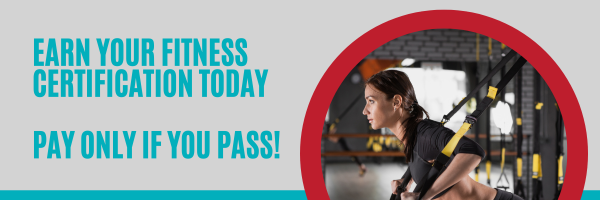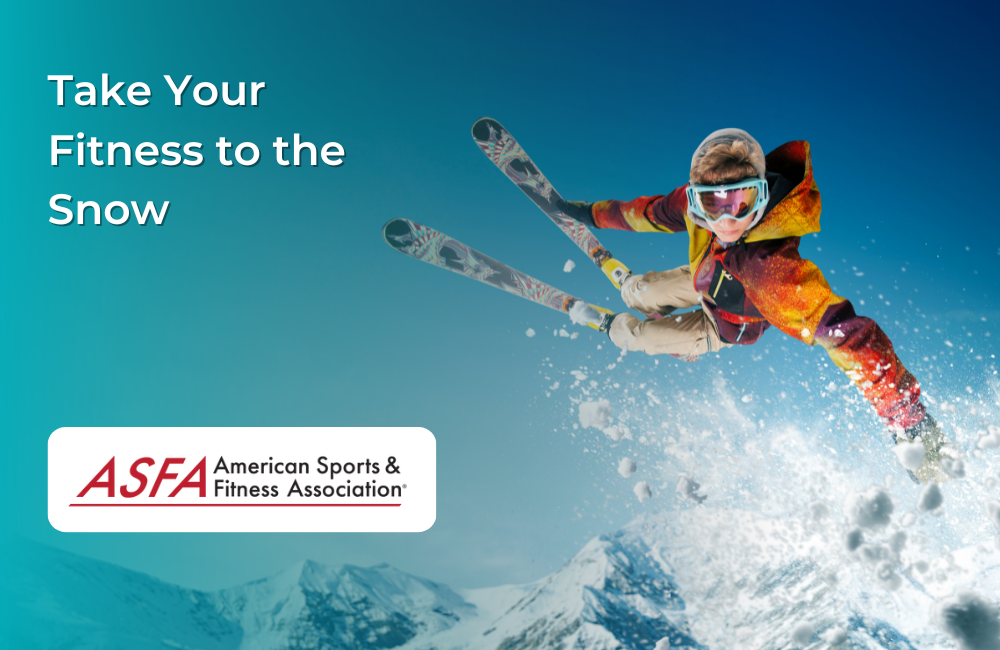Skiing is an exhilarating winter sport that combines physical fitness, mental focus, and the thrill of exploring snowy landscapes. Whether you are a seasoned skier or a beginner looking to hit the slopes, incorporating strength and cardio workouts with ski-specific drills into your fitness routine can help improve your skiing performance and reduce the risk of injury. In this blog post, we will discuss the benefits of ski-specific strength and cardio workouts, as well as some recommended exercises from the American Sports and Fitness Association (ASFA).
The Importance of Strength and Cardio Workouts for Skiers
Skiing is a whole-body workout that demands strength, endurance, flexibility, and balance. Incorporating strength and cardio exercises into your fitness routine can help you build the necessary physical foundation for skiing, ensuring that you have the power, stamina, and agility to conquer the slopes. Some of the key benefits of strength and cardio workouts for skiers include:
- Improved skiing performance: Strength and cardio workouts help to develop the muscular power, endurance, and cardiovascular fitness needed to ski efficiently and effectively.
- Injury prevention: Ski-specific strength and cardio workouts help to strengthen the muscles and connective tissues that are most susceptible to injury during skiing, such as the knees, hips, and ankles.
- Enhanced balance and stability: Skiing requires precise balance and coordination to navigate varied terrain and maintain control at high speeds. Strength and cardio workouts can help improve your balance and stability, making it easier to stay upright and in control on the slopes.
- Increased endurance: Cardiovascular fitness is crucial for skiing, as it allows you to maintain a high level of performance throughout a long day on the slopes. By incorporating cardio workouts into your fitness routine, you can build the endurance needed to ski for extended periods without fatigue.
Ski-Specific Strength Exercises
To maximize the benefits of strength training for skiing, focus on exercises that target the major muscle groups used during skiing, such as the quadriceps, hamstrings, glutes, calves, and core. The ASFA recommends the following ski-specific strength exercises:
- Squats: Stand with your feet shoulder-width apart and lower your body into a squat position, keeping your chest up and your knees tracking over your toes. Perform 3 sets of 10-15 repetitions.
- Lunges: Step forward with one foot and lower your body into a lunge position, with both knees bent at a 90-degree angle. Push through your front heel to return to the starting position and repeat on the other side. Perform 3 sets of 10-15 repetitions on each leg.
- Box jumps: Stand in front of a sturdy box or platform and jump onto it with both feet, landing softly in a squat position. Step back down and repeat. Perform 3 sets of 10-15 repetitions.
- Planks: Hold a plank position on your forearms and toes, with your body in a straight line from head to heels. Engage your core and hold for 30-60 seconds, then rest and repeat for 3 sets.
- Single-leg deadlifts: Stand on one leg, holding a dumbbell or kettlebell in the opposite hand. Hinge at the hips and lower the weight toward the ground, keeping your back straight and your supporting leg slightly bent. Return to the starting position and repeat on the other side. Perform 3 sets of 10-15 repetitions on each leg.
Ski-Specific Cardio Exercises
To build cardiovascular fitness and endurance for skiing, incorporate a variety of cardio exercises into your workout routine, focusing on activities that mimic the movements and demands of skiing. The ASFA recommends the following ski-specific cardio exercises:
- Skierg: The Skierg is a cardio machine that simulates the motion of cross-country skiing. It provides a full-body workout that targets the arms, legs, and core, while also building cardiovascular endurance. Perform 20-30 minutes of interval training on the Skierg, alternating between high-intensity bursts and recovery periods.
- Hill sprints: Find a steep hill and sprint up it as fast as you can, then walk or jog back down for recovery. Repeat for a total of 10-15 sprints. This exercise helps to build explosive power in the legs and improves cardiovascular fitness.
- Stair climbing: Stair climbing provides a challenging cardio workout that targets the quadriceps, hamstrings, glutes, and calves, making it an excellent exercise for skiers. Climb stairs at a steady pace for 20-30 minutes, focusing on maintaining proper form and engaging your core.
- Plyometric exercises: Incorporate plyometric exercises like squat jumps, lateral jumps, and tuck jumps into your cardio workouts to improve power, agility, and coordination for skiing. Perform 3 sets of 10-15 repetitions for each exercise, with short rest periods in between.
Tips for Incorporating Ski Drills into Your Fitness Routine
To get the most out of your ski-specific strength and cardio workouts, the ASFA recommends the following tips:
- Warm-up: Begin each workout with a dynamic warm-up to increase blood flow to your muscles and improve your flexibility. Include exercises like leg swings, hip circles, and ankle rolls to prepare your body for skiing-specific movements.
- Progression: Start with lighter weights and fewer repetitions for strength exercises, and shorter durations for cardio exercises. Gradually increase the intensity of your workouts as your fitness improves.
- Balance: To prevent muscle imbalances and reduce the risk of injury, ensure that your fitness routine includes a balance of strength and cardio exercises, as well as exercises that target both the upper and lower body.
- Recovery: Allow your muscles time to recover by scheduling rest days and incorporating active recovery activities like walking, swimming, or yoga.
- Technique: Consider taking ski lessons or working with a certified ski instructor to improve your skiing technique. Proper technique can help you ski more efficiently, reducing the risk of injury and enhancing your overall skiing experience.
Conclusion
Incorporating ski-specific strength and cardio workouts into your fitness routine can help you take your skiing performance to new heights and make your time on the slopes more enjoyable. By focusing on exercises that target the major muscle groups used during skiing, as well as activities that build cardiovascular endurance, you can prepare your body for the demands of skiing and reduce the risk of injury. Remember to warm up properly, progress gradually, and prioritize recovery to ensure safe and effective training. By following the recommendations and tips provided by the American Sports and Fitness Association, you'll be well on your way to a stronger, more resilient body, ready to tackle the snow-covered slopes with confidence.





